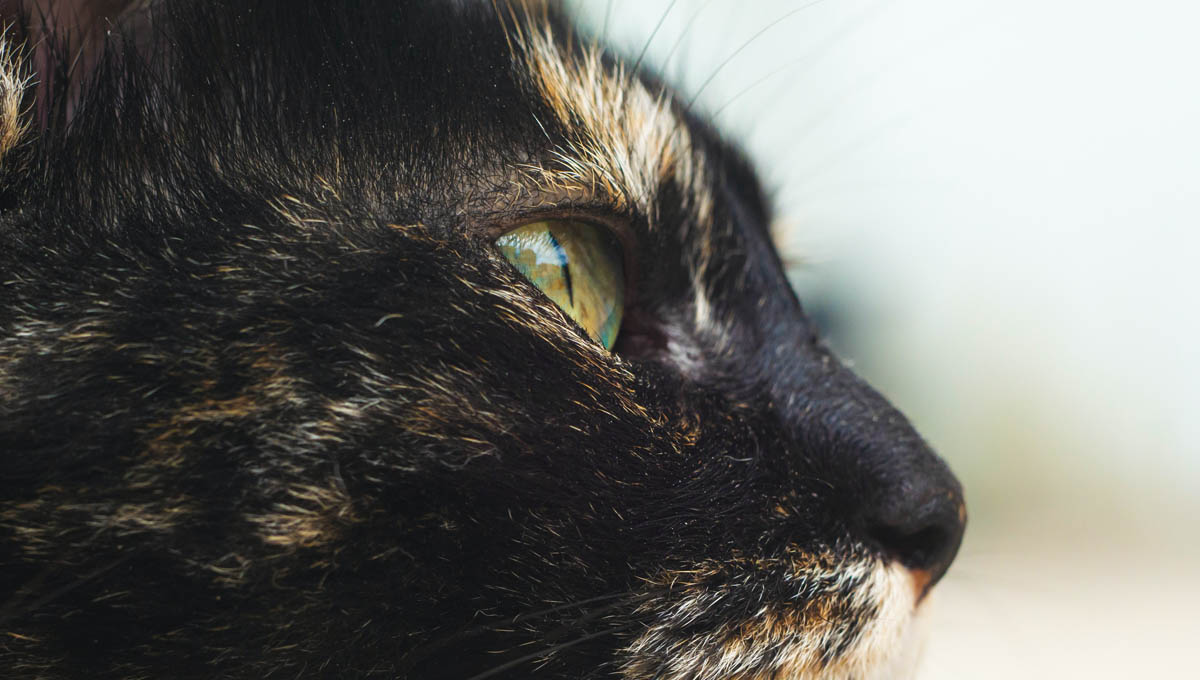Blepharitis is an inflammation of the eyelid margins and surrounding skin and in some cases, the Meibomian glands, which are tiny glands on the eyelid margin which secrete an oily substance to keep tears within the eye. The condition can be chronic (long-standing) or acute (sudden onset), can affect one eye (unilateral) or both (bilateral), posterior (affecting the inner edge of the eyelid where it meets the eyeball), or anterior (affecting the front edge of the eyelid). Blepharitis is typically secondary to an underlying eye disease.
Causes
There are many underlying causes for blepharitis, and it can occur along with conjunctival hyperaemia.
The most common cause of blepharitis is staphylococcus infection of the eyelids. Other causes include allergies, parasites, viral infections, tumours, trauma, irritants, inflammation, immune-mediated and idiopathic (no known cause).
Symptoms
The most common symptom of blepharitis is crusting along the eyelid margin; other symptoms include:
- Eye discharge which may contain pus, mucus or watery discharge
- Irritated, watery eyes
- Eyelid redness (hyperemia)
- Inflammation of the eye margins
- Thickening of the eyelids
- Hair loss
- Pawing the eyes due to irritation
- Sensitivity to light (photophobia)
- Inflammation of the cornea
- Squinting or spasmodic blinking (blepharospasm)
In addition to the above, other symptoms may be present depending on the underlying cause, for example, a cat with feline herpes will have symptoms relating to an upper respiratory infection, a lump will be present if the cat has a tumour.
Diagnosis
The veterinarian can diagnose blepharitis during the physical exam, however, it is important to determine the cause.
Diagnostic workup:
Slit-lamp examination: A slit lamp is a microscope with a bright light that helps the veterinarian evaluate the eyes.
Schirmer tear test: This test measures tear production. A commercial filter strip is placed under the lower eyelid for 60 seconds, the moisture from the eye will slowly move down the strip which is then measured.
Skin scrapings: A skin scraping test uses a scalpel blade to gently scrape along the surface of the skin. It is necessary to do this deep enough to reach mites, which often burrow quite deeply.
Skin prick test: A small number of common allergens are An area of fur is shaved, and a small number of common allergens are pricked onto the skin, to evaluate for allergies.
Culture and sensitivity: A sample of ocular discharge is added to a substance that promotes the growth of bacteria and fungi. This can help with the identification of the type of bacteria as well as evaluate the most suitable antibiotic to treat the infection.
Polymerase chain reaction: This blood test amplifies a small sample of DNA to help diagnose viral infections such as feline herpes.
Buffy coat examination. A sample of blood is spun at high speed to separate it into its components. Red blood cells at the bottom, a small band of white blood cells and finally, the plasma. White blood cells are examined for the presence of abnormal mast cells.
Biopsy and histopathology: A sample of a suspected tumour is biopsied and sent to a laboratory for evaluation to determine the type of tumour.
Food elimination trial: If a food allergy is suspected, the veterinarian will place the cat on a food trial, this involves feeding a novel or hypoallergenic diet, with no other foods or treats to be given during this time. If symptoms resolve, the cat is then placed back onto the usual diet to see if symptoms return.
Treatment
The goal of treatment is to address the underlying cause, where possible, which can include:
Allergies: Switch the cat to a hypoallergenic diet to resolve food allergies. Avoidance of allergens where possible, close windows during high pollen days, install HEPA filters in air conditioners and vacuum cleaners, allergy shots can help to dampen the cat’s allergic response.
Bacterial infection: Topical or oral (systemic) antibiotics (Terramycin, neomycin, gentamicin) to treat bacterial infections.
Viral infection: Antiviral eye drops and L-Lysine to treat feline herpes. Once a cat has had herpes, the virus remains in a dormant state for extended periods, it can reactivate, particularly during times of stress or sickness.
Eyelid abnormalities: Surgery to correct the defect.
Tumours: Surgery to remove the tumour where possible or cryosurgery to freeze and destroy abnormal or diseased tissue.
Fungal infection: Mild cases of histoplasmosis may not require any treatment. Itraconazole or ketoconazole for cats who require treatment. Your cat will need to remain on medication for between 4-6 months and occasionally as long as 12 months.
Mites: Lime sulfur dips or shampoos for four to six weeks or ivermectin for several weeks. Wash all bedding and blankets in very hot water and hang in the sun to dry.
Pemphigus: Treatment of pemphigus complex can be difficult. It involves immunosuppressive therapy to stop the cat’s immune system attacking the tissues. A large dose is initially administered to induce remission; however, due to the potential side effects of these medications, once the condition is under control, the dose will be tapered to the smallest amount possible.
Home care
- Administer medications as instructed.
- Use a warm compress for 5-10 minutes, 3-4 times a day to loosen crusts from the eyes and to help unclog the glands. Clip the hair around the eyes.
- It may be necessary to use an Elizabethan collar on the cat to prevent further damage due to self-trauma.

